Power Devices
RF Devices
LEDs
Laser Diodes
GaN-on-Silicon
GaN-on-Sapphire
GaN-on-SiC
Consumer Electronics
Telecommunications
Automotive
Aerospace
MOCVD
Hydride Vapor Phase Epitaxy
Liquid Phase Epitaxy
North America
Europe
South America
Asia Pacific
Middle East and Africa
North America Outlook (USD Billion, 2019-2035)
North America Gallium Nitride Market by Application Type
Power Devices
RF Devices
LEDs
Laser Diodes
North America Gallium Nitride Market by Type
GaN-on-Silicon
GaN-on-Sapphire
GaN-on-SiC
North America Gallium Nitride Market by End Use Type
Consumer Electronics
Telecommunications
Automotive
Aerospace
North America Gallium Nitride Market by Production Method Type
MOCVD
Hydride Vapor Phase Epitaxy
Liquid Phase Epitaxy
North America Gallium Nitride Market by Regional Type
US
Canada
US Outlook (USD Billion, 2019-2035)
US Gallium Nitride Market by Application Type
Power Devices
RF Devices
LEDs
Laser Diodes
US Gallium Nitride Market by Type
GaN-on-Silicon
GaN-on-Sapphire
GaN-on-SiC
US Gallium Nitride Market by End Use Type
Consumer Electronics
Telecommunications
Automotive
Aerospace
US Gallium Nitride Market by Production Method Type
MOCVD
Hydride Vapor Phase Epitaxy
Liquid Phase Epitaxy
CANADA Outlook (USD Billion, 2019-2035)
CANADA Gallium Nitride Market by Application Type
Power Devices
RF Devices
LEDs
Laser Diodes
CANADA Gallium Nitride Market by Type
GaN-on-Silicon
GaN-on-Sapphire
GaN-on-SiC
CANADA Gallium Nitride Market by End Use Type
Consumer Electronics
Telecommunications
Automotive
Aerospace
CANADA Gallium Nitride Market by Production Method Type
MOCVD
Hydride Vapor Phase Epitaxy
Liquid Phase Epitaxy
Europe Outlook (USD Billion, 2019-2035)
Europe Gallium Nitride Market by Application Type
Power Devices
RF Devices
LEDs
Laser Diodes
Europe Gallium Nitride Market by Type
GaN-on-Silicon
GaN-on-Sapphire
GaN-on-SiC
Europe Gallium Nitride Market by End Use Type
Consumer Electronics
Telecommunications
Automotive
Aerospace
Europe Gallium Nitride Market by Production Method Type
MOCVD
Hydride Vapor Phase Epitaxy
Liquid Phase Epitaxy
Europe Gallium Nitride Market by Regional Type
Germany
UK
France
Russia
Italy
Spain
Rest of Europe
GERMANY Outlook (USD Billion, 2019-2035)
GERMANY Gallium Nitride Market by Application Type
Power Devices
RF Devices
LEDs
Laser Diodes
GERMANY Gallium Nitride Market by Type
GaN-on-Silicon
GaN-on-Sapphire
GaN-on-SiC
GERMANY Gallium Nitride Market by End Use Type
Consumer Electronics
Telecommunications
Automotive
Aerospace
GERMANY Gallium Nitride Market by Production Method Type
MOCVD
Hydride Vapor Phase Epitaxy
Liquid Phase Epitaxy
UK Outlook (USD Billion, 2019-2035)
UK Gallium Nitride Market by Application Type
Power Devices
RF Devices
LEDs
Laser Diodes
UK Gallium Nitride Market by Type
GaN-on-Silicon
GaN-on-Sapphire
GaN-on-SiC
UK Gallium Nitride Market by End Use Type
Consumer Electronics
Telecommunications
Automotive
Aerospace
UK Gallium Nitride Market by Production Method Type
MOCVD
Hydride Vapor Phase Epitaxy
Liquid Phase Epitaxy
FRANCE Outlook (USD Billion, 2019-2035)
FRANCE Gallium Nitride Market by Application Type
Power Devices
RF Devices
LEDs
Laser Diodes
FRANCE Gallium Nitride Market by Type
GaN-on-Silicon
GaN-on-Sapphire
GaN-on-SiC
FRANCE Gallium Nitride Market by End Use Type
Consumer Electronics
Telecommunications
Automotive
Aerospace
FRANCE Gallium Nitride Market by Production Method Type
MOCVD
Hydride Vapor Phase Epitaxy
Liquid Phase Epitaxy
RUSSIA Outlook (USD Billion, 2019-2035)
RUSSIA Gallium Nitride Market by Application Type
Power Devices
RF Devices
LEDs
Laser Diodes
RUSSIA Gallium Nitride Market by Type
GaN-on-Silicon
GaN-on-Sapphire
GaN-on-SiC
RUSSIA Gallium Nitride Market by End Use Type
Consumer Electronics
Telecommunications
Automotive
Aerospace
RUSSIA Gallium Nitride Market by Production Method Type
MOCVD
Hydride Vapor Phase Epitaxy
Liquid Phase Epitaxy
ITALY Outlook (USD Billion, 2019-2035)
ITALY Gallium Nitride Market by Application Type
Power Devices
RF Devices
LEDs
Laser Diodes
ITALY Gallium Nitride Market by Type
GaN-on-Silicon
GaN-on-Sapphire
GaN-on-SiC
ITALY Gallium Nitride Market by End Use Type
Consumer Electronics
Telecommunications
Automotive
Aerospace
ITALY Gallium Nitride Market by Production Method Type
MOCVD
Hydride Vapor Phase Epitaxy
Liquid Phase Epitaxy
SPAIN Outlook (USD Billion, 2019-2035)
SPAIN Gallium Nitride Market by Application Type
Power Devices
RF Devices
LEDs
Laser Diodes
SPAIN Gallium Nitride Market by Type
GaN-on-Silicon
GaN-on-Sapphire
GaN-on-SiC
SPAIN Gallium Nitride Market by End Use Type
Consumer Electronics
Telecommunications
Automotive
Aerospace
SPAIN Gallium Nitride Market by Production Method Type
MOCVD
Hydride Vapor Phase Epitaxy
Liquid Phase Epitaxy
REST OF EUROPE Outlook (USD Billion, 2019-2035)
REST OF EUROPE Gallium Nitride Market by Application Type
Power Devices
RF Devices
LEDs
Laser Diodes
REST OF EUROPE Gallium Nitride Market by Type
GaN-on-Silicon
GaN-on-Sapphire
GaN-on-SiC
REST OF EUROPE Gallium Nitride Market by End Use Type
Consumer Electronics
Telecommunications
Automotive
Aerospace
REST OF EUROPE Gallium Nitride Market by Production Method Type
MOCVD
Hydride Vapor Phase Epitaxy
Liquid Phase Epitaxy
APAC Outlook (USD Billion, 2019-2035)
APAC Gallium Nitride Market by Application Type
Power Devices
RF Devices
LEDs
Laser Diodes
APAC Gallium Nitride Market by Type
GaN-on-Silicon
GaN-on-Sapphire
GaN-on-SiC
APAC Gallium Nitride Market by End Use Type
Consumer Electronics
Telecommunications
Automotive
Aerospace
APAC Gallium Nitride Market by Production Method Type
MOCVD
Hydride Vapor Phase Epitaxy
Liquid Phase Epitaxy
APAC Gallium Nitride Market by Regional Type
China
India
Japan
South Korea
Malaysia
Thailand
Indonesia
Rest of APAC
CHINA Outlook (USD Billion, 2019-2035)
CHINA Gallium Nitride Market by Application Type
Power Devices
RF Devices
LEDs
Laser Diodes
CHINA Gallium Nitride Market by Type
GaN-on-Silicon
GaN-on-Sapphire
GaN-on-SiC
CHINA Gallium Nitride Market by End Use Type
Consumer Electronics
Telecommunications
Automotive
Aerospace
CHINA Gallium Nitride Market by Production Method Type
MOCVD
Hydride Vapor Phase Epitaxy
Liquid Phase Epitaxy
INDIA Outlook (USD Billion, 2019-2035)
INDIA Gallium Nitride Market by Application Type
Power Devices
RF Devices
LEDs
Laser Diodes
INDIA Gallium Nitride Market by Type
GaN-on-Silicon
GaN-on-Sapphire
GaN-on-SiC
INDIA Gallium Nitride Market by End Use Type
Consumer Electronics
Telecommunications
Automotive
Aerospace
INDIA Gallium Nitride Market by Production Method Type
MOCVD
Hydride Vapor Phase Epitaxy
Liquid Phase Epitaxy
JAPAN Outlook (USD Billion, 2019-2035)
JAPAN Gallium Nitride Market by Application Type
Power Devices
RF Devices
LEDs
Laser Diodes
JAPAN Gallium Nitride Market by Type
GaN-on-Silicon
GaN-on-Sapphire
GaN-on-SiC
JAPAN Gallium Nitride Market by End Use Type
Consumer Electronics
Telecommunications
Automotive
Aerospace
JAPAN Gallium Nitride Market by Production Method Type
MOCVD
Hydride Vapor Phase Epitaxy
Liquid Phase Epitaxy
SOUTH KOREA Outlook (USD Billion, 2019-2035)
SOUTH KOREA Gallium Nitride Market by Application Type
Power Devices
RF Devices
LEDs
Laser Diodes
SOUTH KOREA Gallium Nitride Market by Type
GaN-on-Silicon
GaN-on-Sapphire
GaN-on-SiC
SOUTH KOREA Gallium Nitride Market by End Use Type
Consumer Electronics
Telecommunications
Automotive
Aerospace
SOUTH KOREA Gallium Nitride Market by Production Method Type
MOCVD
Hydride Vapor Phase Epitaxy
Liquid Phase Epitaxy
MALAYSIA Outlook (USD Billion, 2019-2035)
MALAYSIA Gallium Nitride Market by Application Type
Power Devices
RF Devices
LEDs
Laser Diodes
MALAYSIA Gallium Nitride Market by Type
GaN-on-Silicon
GaN-on-Sapphire
GaN-on-SiC
MALAYSIA Gallium Nitride Market by End Use Type
Consumer Electronics
Telecommunications
Automotive
Aerospace
MALAYSIA Gallium Nitride Market by Production Method Type
MOCVD
Hydride Vapor Phase Epitaxy
Liquid Phase Epitaxy
THAILAND Outlook (USD Billion, 2019-2035)
THAILAND Gallium Nitride Market by Application Type
Power Devices
RF Devices
LEDs
Laser Diodes
THAILAND Gallium Nitride Market by Type
GaN-on-Silicon
GaN-on-Sapphire
GaN-on-SiC
THAILAND Gallium Nitride Market by End Use Type
Consumer Electronics
Telecommunications
Automotive
Aerospace
THAILAND Gallium Nitride Market by Production Method Type
MOCVD
Hydride Vapor Phase Epitaxy
Liquid Phase Epitaxy
INDONESIA Outlook (USD Billion, 2019-2035)
INDONESIA Gallium Nitride Market by Application Type
Power Devices
RF Devices
LEDs
Laser Diodes
INDONESIA Gallium Nitride Market by Type
GaN-on-Silicon
GaN-on-Sapphire
GaN-on-SiC
INDONESIA Gallium Nitride Market by End Use Type
Consumer Electronics
Telecommunications
Automotive
Aerospace
INDONESIA Gallium Nitride Market by Production Method Type
MOCVD
Hydride Vapor Phase Epitaxy
Liquid Phase Epitaxy
REST OF APAC Outlook (USD Billion, 2019-2035)
REST OF APAC Gallium Nitride Market by Application Type
Power Devices
RF Devices
LEDs
Laser Diodes
REST OF APAC Gallium Nitride Market by Type
GaN-on-Silicon
GaN-on-Sapphire
GaN-on-SiC
REST OF APAC Gallium Nitride Market by End Use Type
Consumer Electronics
Telecommunications
Automotive
Aerospace
REST OF APAC Gallium Nitride Market by Production Method Type
MOCVD
Hydride Vapor Phase Epitaxy
Liquid Phase Epitaxy
South America Outlook (USD Billion, 2019-2035)
South America Gallium Nitride Market by Application Type
Power Devices
RF Devices
LEDs
Laser Diodes
South America Gallium Nitride Market by Type
GaN-on-Silicon
GaN-on-Sapphire
GaN-on-SiC
South America Gallium Nitride Market by End Use Type
Consumer Electronics
Telecommunications
Automotive
Aerospace
South America Gallium Nitride Market by Production Method Type
MOCVD
Hydride Vapor Phase Epitaxy
Liquid Phase Epitaxy
South America Gallium Nitride Market by Regional Type
Brazil
Mexico
Argentina
Rest of South America
BRAZIL Outlook (USD Billion, 2019-2035)
BRAZIL Gallium Nitride Market by Application Type
Power Devices
RF Devices
LEDs
Laser Diodes
BRAZIL Gallium Nitride Market by Type
GaN-on-Silicon
GaN-on-Sapphire
GaN-on-SiC
BRAZIL Gallium Nitride Market by End Use Type
Consumer Electronics
Telecommunications
Automotive
Aerospace
BRAZIL Gallium Nitride Market by Production Method Type
MOCVD
Hydride Vapor Phase Epitaxy
Liquid Phase Epitaxy
MEXICO Outlook (USD Billion, 2019-2035)
MEXICO Gallium Nitride Market by Application Type
Power Devices
RF Devices
LEDs
Laser Diodes
MEXICO Gallium Nitride Market by Type
GaN-on-Silicon
GaN-on-Sapphire
GaN-on-SiC
MEXICO Gallium Nitride Market by End Use Type
Consumer Electronics
Telecommunications
Automotive
Aerospace
MEXICO Gallium Nitride Market by Production Method Type
MOCVD
Hydride Vapor Phase Epitaxy
Liquid Phase Epitaxy
ARGENTINA Outlook (USD Billion, 2019-2035)
ARGENTINA Gallium Nitride Market by Application Type
Power Devices
RF Devices
LEDs
Laser Diodes
ARGENTINA Gallium Nitride Market by Type
GaN-on-Silicon
GaN-on-Sapphire
GaN-on-SiC
ARGENTINA Gallium Nitride Market by End Use Type
Consumer Electronics
Telecommunications
Automotive
Aerospace
ARGENTINA Gallium Nitride Market by Production Method Type
MOCVD
Hydride Vapor Phase Epitaxy
Liquid Phase Epitaxy
REST OF SOUTH AMERICA Outlook (USD Billion, 2019-2035)
REST OF SOUTH AMERICA Gallium Nitride Market by Application Type
Power Devices
RF Devices
LEDs
Laser Diodes
REST OF SOUTH AMERICA Gallium Nitride Market by Type
GaN-on-Silicon
GaN-on-Sapphire
GaN-on-SiC
REST OF SOUTH AMERICA Gallium Nitride Market by End Use Type
Consumer Electronics
Telecommunications
Automotive
Aerospace
REST OF SOUTH AMERICA Gallium Nitride Market by Production Method Type
MOCVD
Hydride Vapor Phase Epitaxy
Liquid Phase Epitaxy
MEA Outlook (USD Billion, 2019-2035)
MEA Gallium Nitride Market by Application Type
Power Devices
RF Devices
LEDs
Laser Diodes
MEA Gallium Nitride Market by Type
GaN-on-Silicon
GaN-on-Sapphire
GaN-on-SiC
MEA Gallium Nitride Market by End Use Type
Consumer Electronics
Telecommunications
Automotive
Aerospace
MEA Gallium Nitride Market by Production Method Type
MOCVD
Hydride Vapor Phase Epitaxy
Liquid Phase Epitaxy
MEA Gallium Nitride Market by Regional Type
GCC Countries
South Africa
Rest of MEA
GCC COUNTRIES Outlook (USD Billion, 2019-2035)
GCC COUNTRIES Gallium Nitride Market by Application Type
Power Devices
RF Devices
LEDs
Laser Diodes
GCC COUNTRIES Gallium Nitride Market by Type
GaN-on-Silicon
GaN-on-Sapphire
GaN-on-SiC
GCC COUNTRIES Gallium Nitride Market by End Use Type
Consumer Electronics
Telecommunications
Automotive
Aerospace
GCC COUNTRIES Gallium Nitride Market by Production Method Type
MOCVD
Hydride Vapor Phase Epitaxy
Liquid Phase Epitaxy
SOUTH AFRICA Outlook (USD Billion, 2019-2035)
SOUTH AFRICA Gallium Nitride Market by Application Type
Power Devices
RF Devices
LEDs
Laser Diodes
SOUTH AFRICA Gallium Nitride Market by Type
GaN-on-Silicon
GaN-on-Sapphire
GaN-on-SiC
SOUTH AFRICA Gallium Nitride Market by End Use Type
Consumer Electronics
Telecommunications
Automotive
Aerospace
SOUTH AFRICA Gallium Nitride Market by Production Method Type
MOCVD
Hydride Vapor Phase Epitaxy
Liquid Phase Epitaxy
REST OF MEA Outlook (USD Billion, 2019-2035)
REST OF MEA Gallium Nitride Market by Application Type
Power Devices
RF Devices
LEDs
Laser Diodes
REST OF MEA Gallium Nitride Market by Type
GaN-on-Silicon
GaN-on-Sapphire
GaN-on-SiC
REST OF MEA Gallium Nitride Market by End Use Type
Consumer Electronics
Telecommunications
Automotive
Aerospace
REST OF MEA Gallium Nitride Market by Production Method Type
MOCVD
Hydride Vapor Phase Epitaxy
Liquid Phase Epitaxy

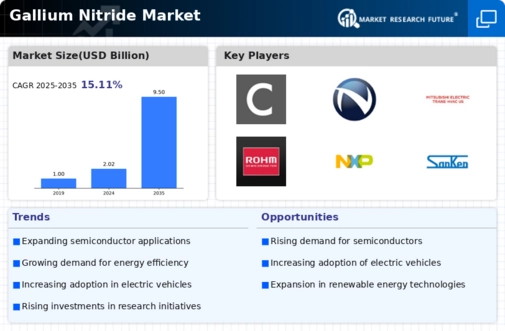
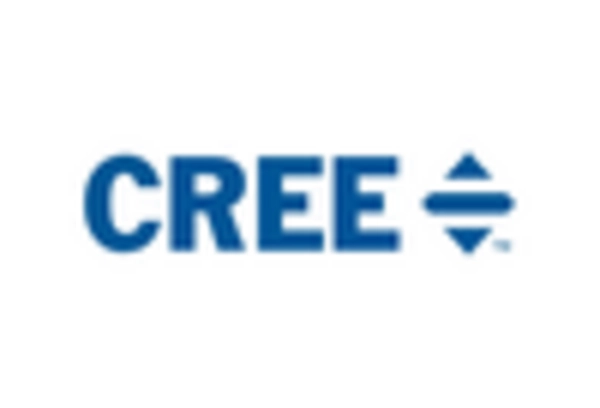
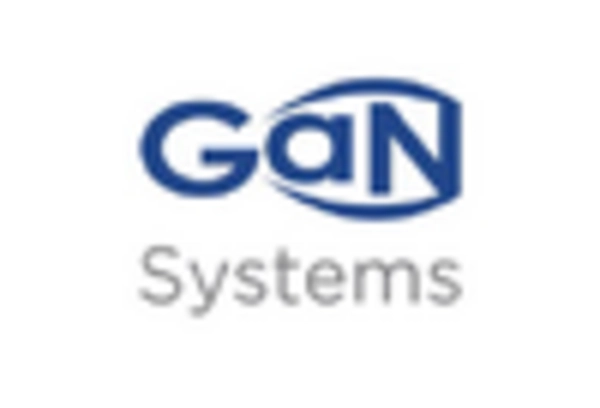
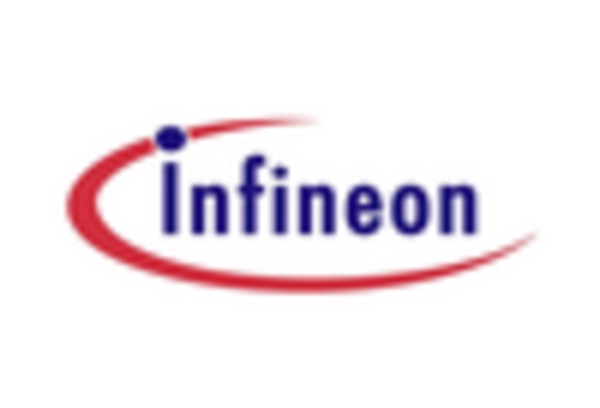
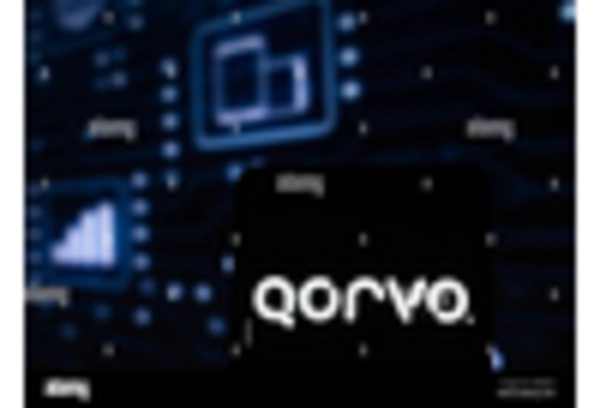
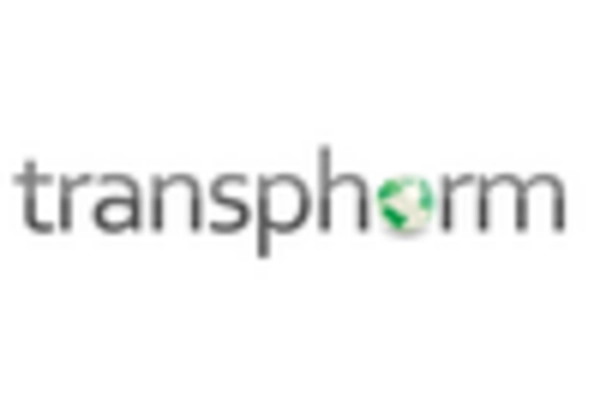









Leave a Comment